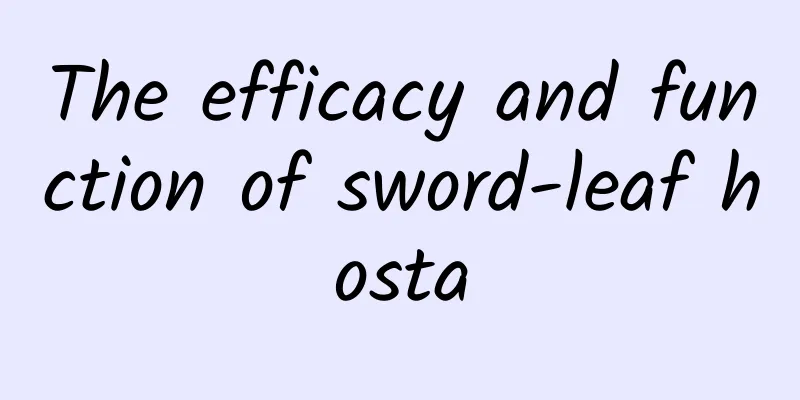How can the "Olympic top star" Bing Dwen Dwen be so cute? It turns out that she fell into the "stimulation trap"...

|
In 2022, the Beijing Winter Olympics mascot "Bing Dwen Dwen" really became a top star, first charming a group of athletes and reporters, and then becoming a hot search with "Carmen" and "Shaking Snow". Obviously, in the cold winter, no one can resist a "rock sugar rolling". But why is Bing Dwen Dwen so cute that it "touches the heart"? Japanese journalist Yoshitō Tsujioka, who became famous for buying too many Bing Dwen Dwen badges (Photo source: CCTV News) In English, the word "cute" first appeared as an abbreviation of the word acute, and its original meaning was "alert, intelligent, or shrewd." In the early 19th century, American elementary school students began using the word cute to describe cute or attractive things. But in some contexts, cute also means fragile: the French word for "cute" is mignon, but this word also means "petite and pretty", and its etymology comes from the English word minion, meaning servant or subordinate. The Japanese word for cute "kawaii" (かわいい, pronounced Kawaii) has a similar meaning - the word first appeared in the 11th century to mean "pitiable." Obviously, Bing Dwen Dwen’s cuteness is not created by her pitiful image. We would rather call it “cute and adorable”: big eyes, short arms and legs, and a disproportionately large head—these baby-like features make the Winter Olympics mascot, which looks full of energy, appear innocent, cute and lovable. Baby Schema It wasn’t until the 20th century that Nobel laureates Konrad Lorenz and Niko Tinbergen described the features that people consider cute or lovable, the “infant schema”: round eyes, chubby cheeks, high brow ridges, small chins, and a large head to small body ratio. These features were crucial to human evolution because they helped the brain recognize weak infants and give them the attention and care to help them survive. From the outside, many "cute things" look fragile and vulnerable, but the characteristic of "cuteness" is very powerful. In 2016, Morten L. Kringelbach and others from Oxford University published a review on "cuteness" in Trends in Cognitive Sciences. In the article, they said that "cuteness" is "one of the most basic and powerful forces that can shape human behavior." In fact, the judgment of "cuteness" may be very necessary for humans. Klingebach's research team conducted an experiment in which they showed the faces of babies and adults and examined the brain activity when the subjects saw these images. They found that the brain reacted in less than one-seventh of a second after seeing the "cute things". His research team concluded that "cuteness" is the first key to unlock the brain's rapid attention resources, after which the brain network related to sympathy and empathy will come into play. The Master Key to the Brain If cuteness is such an important key, could a locksmith forge a master key? Decades ago, Lorenz and Tinbergen introduced the concept of "supernormal stimulus", that is, a stimulus that is more prominent or intense than a natural stimulus. In a classic experiment, Tinbergen found that if real goose eggs were placed together with white volleyballs, geese were more inclined to roll the volleyballs back to their nests. In the eyes of these geese, the larger, rounder white volleyballs were obviously more attractive than real goose eggs. Here, the volleyball is a supernormal stimulus. Similarly, Bing Dwen Dwen’s baby features may be more prominent than those of real babies, making it a supernormal stimulus: too cute, too cute to resist, but not as high maintenance as real babies. This “cuteness” does not make us want to raise a real Bing Dwen Dwen or a giant panda, but our brains are still “hijacked” by the oversized eyes and two-headed bodies of such cute images. It’s as if we originally evolved the ability to sense sugar in food only to better obtain energy, but now this ability makes us love sweets. Bing Dwen Dwen shakes off the snow (Photo source: CCTV.com) Cute cartoon characters, like supernormal stimuli such as high-sugar foods, stimulate the nucleus accumbens in our brains, a neural structure that is critical in the brain's reward circuit. Neurons in the nucleus accumbens can release dopamine, the "source of happiness." Studies have shown that supernormal stimuli activate the nucleus accumbens, focusing the brain's full attention on the reward response. An international team of researchers studied this phenomenon. They artificially processed some baby photos to make the babies in the photos "cuter" or "less cute" than normal babies, thereby screening out facial features that people consider to be supernormal stimuli. The researchers showed the women real and manipulated pictures and scanned their brains using functional magnetic resonance imaging. As the researchers had expected, increasing or decreasing cuteness had a significant effect on metabolic activity in the nucleus accumbens, suggesting that this brain region can respond to supernormal stimuli and inspire altruistic and nurturing behavior toward infants. Other supernormal stimuli, such as sugar, activate the brain’s reward circuitry in a similar way. One study showed that dopamine activity in the nucleus accumbens region of the brains of laboratory rats was related to the amount of sugar water they consumed. Similarly, researchers in Oregon showed that obese teenage girls showed supernormal brain activity in the caudate nucleus when they enjoyed a chocolate milkshake (the caudate nucleus is a brain region adjacent to the nucleus accumbens and is also involved in the reward mechanism). It seems that whether it is the cuteness of babies, sugar, or other rewarding stimuli, they all seem to have the privilege of opening the brain’s attention system first. For the brain’s reward circuitry, Bing Dwen Dwen and a cup of hot chocolate are the same. 'Shallow Love' The science of cuteness is both intuitive and puzzling. Two hundred years ago, cuteness might have been a linguistic concept. Today, it’s a quick way to get our attention, love, and affection, all key neural resources. Our love for Bing Dwen Dwen may reveal the superficiality of human emotions: Why is love inspired by such superficial appearance characteristics rather than by deeper judgment criteria? Klingebach and his colleagues hope to learn more about these "algorithms" of the brain. In any case, as people's cultural awareness of cuteness continues to deepen, big eyes or round faces may become more popular. (Xue Rongrong: Blame my small eyes?) When you are mesmerized by the Winter Olympics mascot "Bing Dwen Dwen", don't forget the Winter Paralympic mascot "Shuey Rhon Rhon". (Photo source: Beijing Winter Olympics Organizing Committee official website) Source: Global Science By Joel Frohlich Translation: Zhang Xue The pictures in this article with the "Science Popularization China" watermark are all from the copyright gallery. The pictures are not authorized for reprinting. Original link: https://aeon.co/ideas/how-the-cute-pikachu-is-a-chocolate-milkshake-for-the-brain Reference Links: https://pubmed.ncbi.nlm.nih.gov/12933362/https://journals.plos.org/plosone/article?id=10.1371/journal.pone.0001664https://pubmed.ncbi.nlm .nih.gov/19025237/http://www.pnas.org/content/106/22/9115.fullhttps://www.cell.com/trends/cognitive-sciences/pdf/S1364-6613(16)30042-0.pdf |
Recommend
Academician Wu Xinzhi: Spending a lifetime to get closer to the truth
The following article is from China Science Daily...
Can stomach pain lead to heart attack? These pains you ignore may be fatal...
Expert of this article: Yan Kaixin, Master of Car...
The efficacy and function of firecracker flower
In daily life, people are not only very familiar ...
Why do some people get red spots while others get big blisters after being bitten by mosquitoes?
Audit expert: Zhang Yuhong Chief Physician of Der...
The efficacy and function of Bupleurum chinense
Bupleurum chinense is a common medicinal material...
Eat "light food" to lose weight, you need to pay attention to these
Recently, the topic #Chinese light meals are more...
What are the effects of roasted Schisandra chinensis
Wuyezi is a traditional Chinese medicine that eve...
The efficacy and function of Tujingpi [picture]
Tujingpi [picture] is a medicinal material that c...
How to eat and how much red ginseng should be used?
Red ginseng is a very common thing in normal time...
The efficacy and function of Pittosporum tobira bark
Chinese medicinal materials are very common, and ...
What are the benefits of stinking sycamore root
The root of stinking sycamore is a commonly used ...
Which fruits are not sweet but can easily make people gain weight?
Hot weather, no appetite Have some fruit Some peo...
Cancer screening for a disagreement? Only when these conditions are met can cancer screening be worthwhile
After Fanpu published "Some cancer screening...
In a blink of an eye, crayfish shells have been transformed from "kitchen waste" into "little experts" in capturing microplastics!
Author: Shi Xiangqi and Li Chuanfu Microplastic p...
The image of the red-crowned crane has collapsed? The fairy-like and beautiful crane is actually bald?
What? The image of the red-crowned crane has coll...









